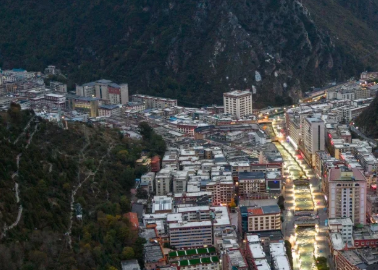
Kangding, located in the eastern part of Garze Tibetan Autonomous Prefecture, Sichuan Province, is a city with a long history and profound cultural heritage. Formerly known as the “Arrow Furnace”, it is said that Zhuge Liang, the Prime Minister of Shu Han during the Three Kingdoms period, cast arrows here, hence the name. Kangding is not only an important post station on the ancient Sichuan Tibet Tea Horse Road, but also a bridgehead for the intersection of Han Tibetan culture. Throughout history, it has been a hub for the distribution of Han Tibetan trade goods and one of the three major cultural centers in the Tibetan region.
The Kangding Love Song Scenic Area is located in the middle section of the Gongga Mountains, about 17 kilometers away from the city center of Kangding. It is a national AAAA level tourist attraction and a World Natural Heritage nomination site. This place is located at the northern foot of Hengduan Mountain, with an altitude between 2600 and 3780 meters. It has various natural landscapes such as plateau lakes, primitive forests, hot springs, and snow capped peaks. The most famous one among them, Mugecuo (Wild Man Sea), is one of the largest mountain lakes in northwest Sichuan. The lake water is as clear as a mirror, surrounded by mountains, and the scenery is magnificent.
Kangding is the intersection of Tibetan and Han cultures, where there is a strong Tibetan flavor as well as traces of Han culture. The Kangding Love Song is the best witness to this cultural fusion. This song originated from the Liuli tune in the Kangding area, and after continuous singing and adaptation by folk artists, it eventually became a popular classic folk song. It is not only widely spread domestically, but also has gone abroad, becoming one of the ten most influential folk songs in the world listed by UNESCO.